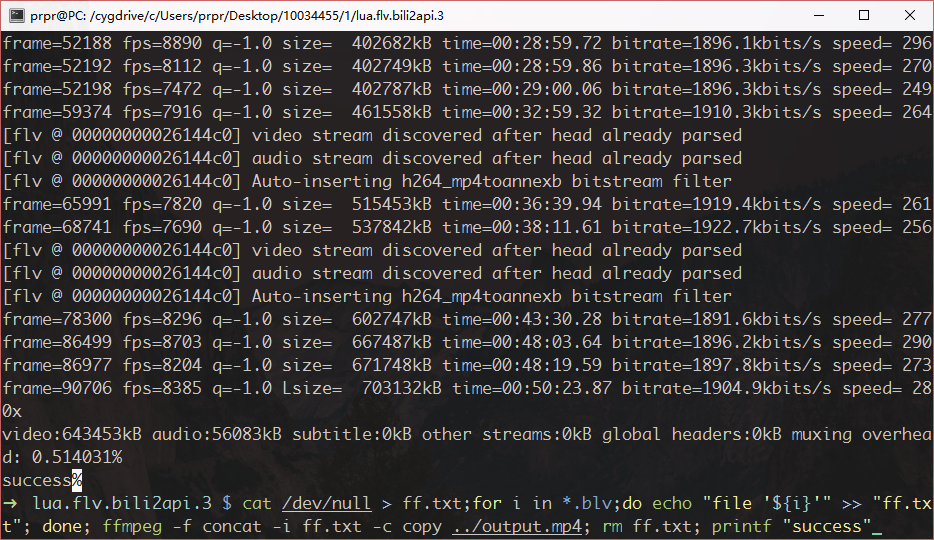

If your clip has no audio, the above command will throw an error – instead, use: ffmpeg -i input.mp4 -filter_complex "reverse,fifo concat=n=2:v=1 " -map "" output. I've added a fifo filter to avoid frame drops. Technically, you can do it using ffmpeg -i input.mp4 -filter_complex "reverse,fifo concat=n=2:v=1:a=1 " -map "" -map "" output.mp4īut the reverse filter will use a lot of memory for large videos. What I am trying to achieve is a ping pong effect, where the video plays once, then plays backwards right after. You can play concatenated video file with Flash Player Projector:Ĭ:\herong>\local\bin\flashplayer_13_sa Anchor_and_Spider_Man.I was able to reverse with: ffmpeg -i input.mp4 -vf reverse output_reversed.mp4Īnd I can concat with: ffmpeg -i input.mp4 -i input.mp4 -filter_complex " concat=n=2:v=1:a=1 " -map "" -map "" output.mp4īut can I concat with a reverse version of the video, with a single command? Global headers:0kB muxing overhead: 1.442786% Video:1294kB audio:617kB subtitle:0kB other streams:0kB Output #0, swf, to 'Anchor_and_Spider_Man.swf': i Anchor_Great_Escape.swf -i Spider_Man.swf Now I am ready to merge two SWF video files into a longer video file: The following illustration may help to understand the above command: "output_file" specifies the output file."-map " forces stream labeled as go to the output file.


"a=1" specifies 1 audio stream in each segment. "n=2" specifies 2 segments of input streams "v=1" specifies 1 video stream in each segment

 0 kommentar(er)
0 kommentar(er)
